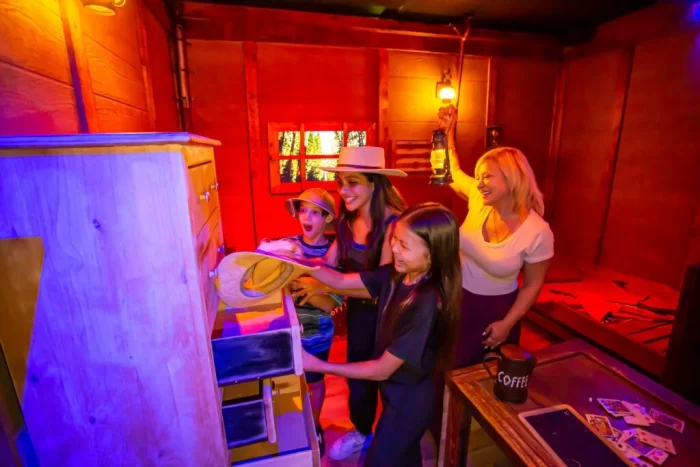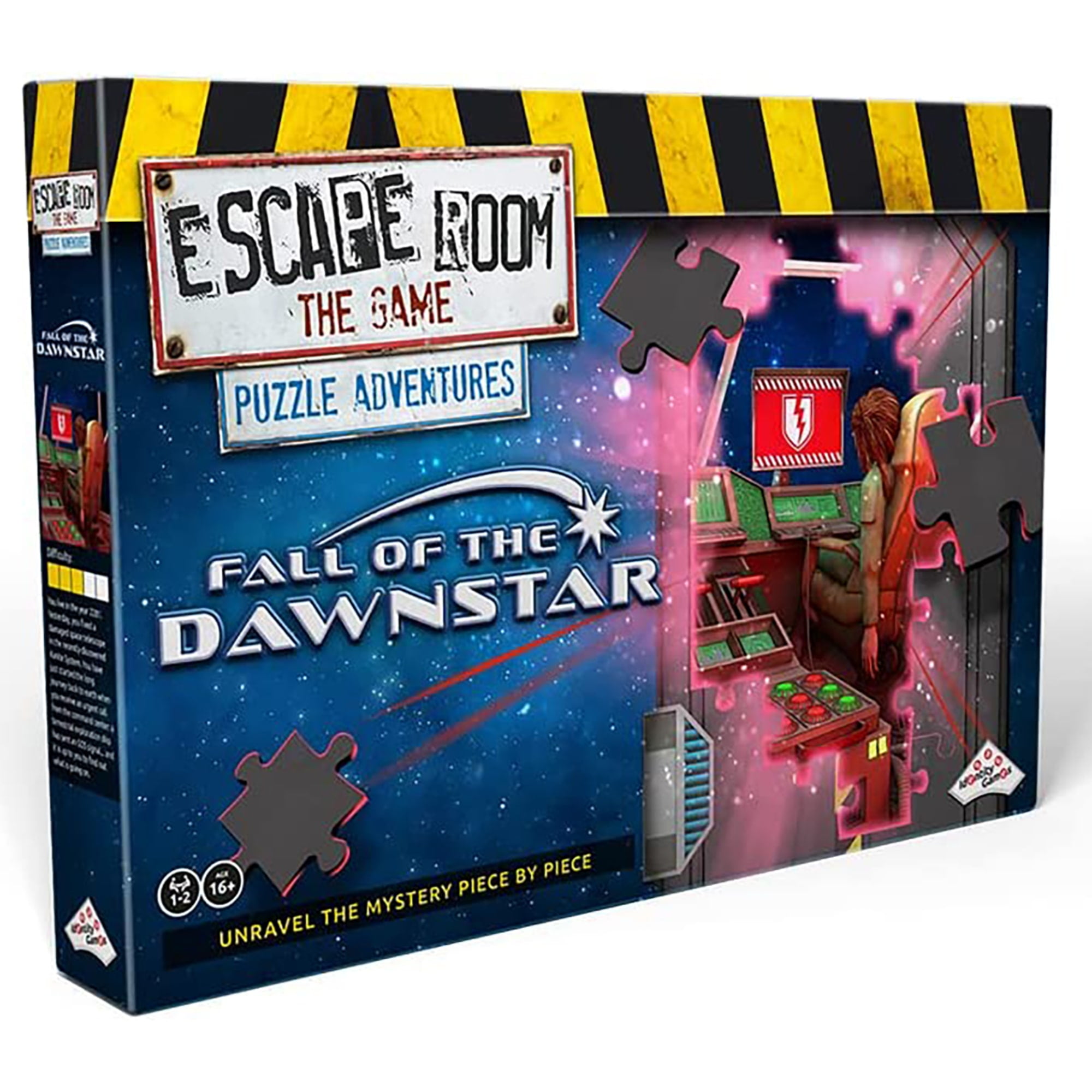Obstacle Your Mind With Our Intriguing Escape Room Puzzles and Clues
Starting an escape room experience supplies a multifaceted experience that mixes cognitive difficulties with immersive storytelling. Each area, carefully crafted with one-of-a-kind motifs, draws participants right into a globe where logic, observation, and physical challenges merge. This atmosphere not only cultivates vital thinking and team effort yet likewise gives the excitement of exploration as each clue leads to the next. To fully value the detailed design and myriad kinds of difficulties involved, one must take into consideration the strategies and advantages that make these experiences both mentally stimulating and exceptionally gratifying. Exactly how can these escape areas transform your approach to analytical?
The Art of Challenge Style
The art of challenge layout in getaway rooms is a imaginative and careful procedure that calls for a deep understanding of both cognitive and emotional engagement. Crafting a successful problem includes stabilizing intricacy with solvability, ensuring that individuals continue to be challenged yet not overwhelmed. This equilibrium is critical, as it cultivates a feeling of success and promotes ongoing involvement.
Challenge designers should think about numerous cognitive skills, such as pattern recognition, deductive reasoning, and spatial recognition. These elements need to be interwoven effortlessly within the narrative of the getaway space, boosting the immersive experience. Psychological involvement is equally vital; challenges must stimulate inquisitiveness, excitement, and periodic irritation, encouraging participants to be determined and inevitably do well.
Interest to information is vital. Every idea, prop, and mechanism should be thoroughly made and examined to make sure functionality and coherence within the storyline. Developers often repeat on their creations, incorporating comments from test teams to refine difficulty levels and remove obscurities.

Kinds of Escape Room Obstacles
Recognizing the intricacies of puzzle layout normally results in an expedition of the varied sorts of difficulties come across in retreat areas. These obstacles can be generally categorized into physical problems, logic puzzles, and observational challenges, each offering one-of-a-kind types of involvement and cognitive stimulation.
Physical challenges require individuals to communicate with their atmosphere, commonly entailing tasks such as constructing things, controling systems, or discovering surprise compartments. These difficulties involve tactile detects and spatial reasoning, urging teamwork and hands-on analytic.
Logic puzzles, on the other hand, need logical thinking and pattern acknowledgment. Participants may be entrusted with translating ciphers, solving mathematical troubles, or discovering links in between seemingly unconnected hints - escape room in seattle. These puzzles are made to evaluate the gamers' deductive thinking and intellectual prowess
Empirical challenges count on keen attention to detail. Gamers have to inspect their surroundings to recognize subtle tips, disparities, or concealed messages. These challenges typically demand a sharp eye and an ability to view links that others might ignore.
Approaches for Success
Achieving success in retreat areas calls for a thoughtful mix of strategy and collaboration. Teamwork is paramount; gamers should leverage their collective toughness to fix complicated puzzles efficiently. Splitting tasks according to specific skills can simplify the procedure-- those with a propensity for pattern recognition can handle visual challenges, while logical thinkers take on series and puzzles.
Efficient communication is one more foundation of success. Sharing discoveries promptly prevents copied efforts and ensures everybody continues to be on the exact same page. Utilizing a main area to position discovered things can assist track progression and avoid missing critical clues.
Time administration is just as vital. Allocate a specific quantity of time to each puzzle, staying clear of extended focus on any solitary difficulty. If progression stalls, switching over problems or looking for assistance from colleagues can offer fresh point of views.
It's likewise helpful to acquaint oneself with usual escape space motifs and puzzle kinds beforehand. Comprehending potential puzzle styles, such as ciphers or lock mixes, can accelerate problem-solving.
Finally, maintaining a favorable and made up mindset under stress can significantly affect performance. Stress can shadow judgment, so maintaining tranquil ensures clear reasoning and effective collaboration, leading to a higher likelihood of efficiently leaving.

Advantages of Escape Rooms
Participating in escape areas offers a wide range of advantages that expand beyond simple amusement. These immersive experiences act as a robust platform for establishing crucial thinking and analytic skills. Participants are required to analyze ideas, recognize patterns, and develop remedies under time restrictions, fostering imagination and cognitive flexibility.
Moreover, retreat spaces are an effective tool for improving teamwork and communication. The collective website link nature of these activities demands effective interaction and coordination amongst employee. This setting motivates individuals to verbalize their thoughts plainly, listen proactively, and work synergistically in the direction of an usual objective, consequently enhancing interpersonal abilities.
Moreover, getaway areas offer an outstanding avenue for stress and anxiety alleviation and mental restoration. The gripping nature of the challenges allows people to divert their focus from everyday stress factors, promoting a sense of achievement and well-being upon resolving the puzzles. This can lead to enhanced psychological health and enhanced productivity in other areas of life.
Lastly, these experiences often require creative thinking and ingenuity, which can equate into innovative problem-solving capacities in expert setups. By involving in getaway areas, individuals can develop a diverse capability that applies in various real-world scenarios, making them a beneficial enhancement to any kind of personal or specialist development strategy.
Popular Themes and Scenarios
Looking into the varied world of getaway rooms discloses a myriad of popular motifs and scenarios that captivate individuals and enhance the immersive experience. Amongst one of the most precious themes are those that transfer players right into historical periods or sensational realms. For example, old Egyptian tombs, medieval castles, and pirate adventures are seasonal favorites, enabling participants to fix problems within highly thorough settings that stimulate a sense of journey and exploration - escape room in seattle.
One more prevalent motif is the enigma and investigator genre, where gamers find themselves in the function of sleuths addressing a criminal offense or uncovering secrets. These situations usually feature intricate storylines and a collection of interconnected clues that require eager monitoring and deductive reasoning to unwind.
Furthermore, scientific research fiction and horror motifs hold significant allure, drawing on the intrigue of advanced innovation or the excitement of browsing haunted laboratories and houses. These scenarios frequently incorporate unique results and sophisticated props, enhancing the realistic look and tension.
Last but not least, many getaway rooms attract ideas from prominent culture, producing experiences based upon precious publications, films, or television shows. This can create a sense of familiarity and excitement, as individuals involve with this hyperlink circumstances that pay homage to their preferred stories.
Verdict
The intricate design of getaway area puzzles and hints provides a special mix of cognitive challenges and immersive narration. By engaging in numerous types of physical, rational, and empirical puzzles, participants refine critical thinking and team effort abilities.
Each space, thoroughly crafted with distinct themes, draws participants into a world where reasoning, observation, and physical problems merge.The art of challenge design in escape rooms is a thorough and innovative process that needs a deep understanding of both cognitive and emotional involvement. Crafting an effective problem involves balancing intricacy with solvability, ensuring that individuals continue to be challenged yet not bewildered. The engrossing nature of the obstacles allows people to divert their great site emphasis from day-to-day stress factors, promoting a feeling of achievement and wellness upon addressing the puzzles.The detailed style of retreat room puzzles and ideas offers a distinct mix of cognitive challenges and immersive narration.
Comments on “Experience Thrilling Escapes at the Best Escape Room in Seattle WA”